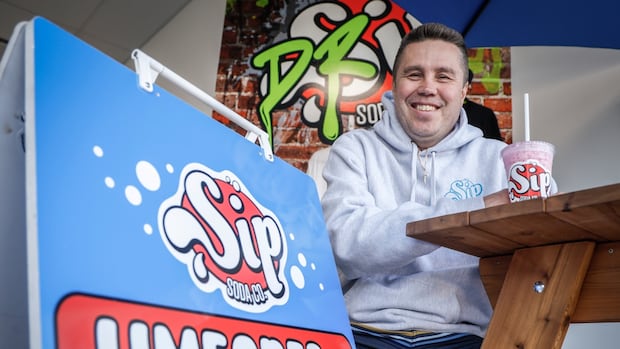Canadian artist and naturalist Robert Bateman celebrated his 95th birthday on May 24 — and while many would have considered retirement long ago, slowing down hasn’t crossed his mind.
Bateman is still showing his work at solo exhibitions and international shows, painting every day and enjoying the nature surrounding his Salt Spring Island, B.C., home, where he’s lived for 40 years.
He started painting as a young boy — his first piece was of an elk. For many years, he dabbled in abstract art, before focusing on the realism he’s known for today.
Bateman spoke to CBC’s Gregor Craigie ahead of his milestone birthday.
On The Island9:56Still painting after all these years: Salt Spring Island artist and naturalist Robert Bateman turns 95
Gregor Craigie spoke with painter, Robert Bateman.
This interview has been edited for length and clarity.
Happy birthday!
The 24th of May is the Queen’s Victoria’s Birthday. We always had a holiday on the 24th and fireworks. I think it affected my brain, having a holiday in fireworks on my birthday every year.
I looked at your itinerary not long ago and it doesn’t look like the itinerary of somebody who’s about to turn 95. You’re still keeping very busy with painting and art and talking and education and so on.
I’m fairly spry. I walk more slowly cause I tripped on a blackberry bramble and basically tore the foot off the bottom of my right leg but so I kind of limp, but otherwise I’m pretty good.
How are you keeping busy these days?
It doesn’t seem to have changed from what it’s been for decades. I’m painting every day. I still have a demand for my work. There’s a waiting list of people that want commissions, and I tell them, ‘Don’t hold your breath. I may get to it, I may not.’

There are two de rigueur things that I do every year. One is the Birds in Art Exhibition. It’s an annual show in Wisconsin at the Leigh Yawkey Woodson Art Museum. I’ve been doing that for many, many decades. And the other one is the Society of Animal Artists. Both of them are international, centred in the States. Those are things that are not for sale. Those are things that I do to show the best I still can do.
You’re still painting today. What goes through your mind when you look at some of your older paintings? How does the 2025 version of you look back at the paintings from decades gone by?
Well, when I was a lot younger, I went through various phases and stages which most or many artists have done well. Picasso is famous for his blue period and rose period, et cetera. Andrew Wyeth never went through stages. He started out as a realist and was always a realist.
I went through these different stages of abstraction, and I thought I was always going to be an abstract painter, and then I went on to other stages, But quite literally, Andrew Wyeth came to me as — if you know your Bible — my road to Damascus.

I thought that abstract was the future of art. Now, abstract is kind of a quaint thing. It turned out that Andrew Wyeth never cared about that. He just always painted realistic stuff.
There’s two parts to me that are virtually equal. I can’t say which dominates, the artist or the naturalist. You cannot be a naturalist and just do big gobs of paint, which is what I was doing, like the abstract expressionists like Jackson Pollock and so on. Big gobs of paint just don’t show the particularity of how do you tell a song sparrow from a Savannah sparrow? I gradually evolved out of my abstract snobbery and have been painting realism ever since, as I say, for decades.
Do you ever do any abstract work just for yourself?
No. Been there, done that. I was pleased with that work and I’m so proud of it. We still hang some of my abstracts in the house. My wife Birgit is an abstract artist who evolved into doing fabric art, but abstract designs, starting with nature and then taking it and pushing it into decorative designs.
Can you envision other evolutions for yourself from an artistic point of view?
No, you have to be a straight realist if you’re going to be a naturalist, and care about particularity. I’m where I belong. I don’t think it’s just laziness. It’s much more interesting to get involved with the particularity of the individual species, so I can’t see anything ahead that would be different in style.

You’ve been on Salt Spring Island for many years. Do you still find inspiration for your art around you in your specific location?
Yes. Without moving from looking out our windows, I could have a lifetime of subject matter. We go a little bit further afield. We happen to have a family cottage on Hornby Island, so some of my subject matter comes from that area.
Occasionally I have a reason to paint subject matter that I got from different trips that I’ve taken. I don’t think I’m going to be painting very many trips. Paintings from the magnum opus trip, which was around the world in a Land Rover back in 1957-58. I don’t need to travel particularly anymore. This sounds a bit too nostalgic, but I’ve got tons and tons of memories.







